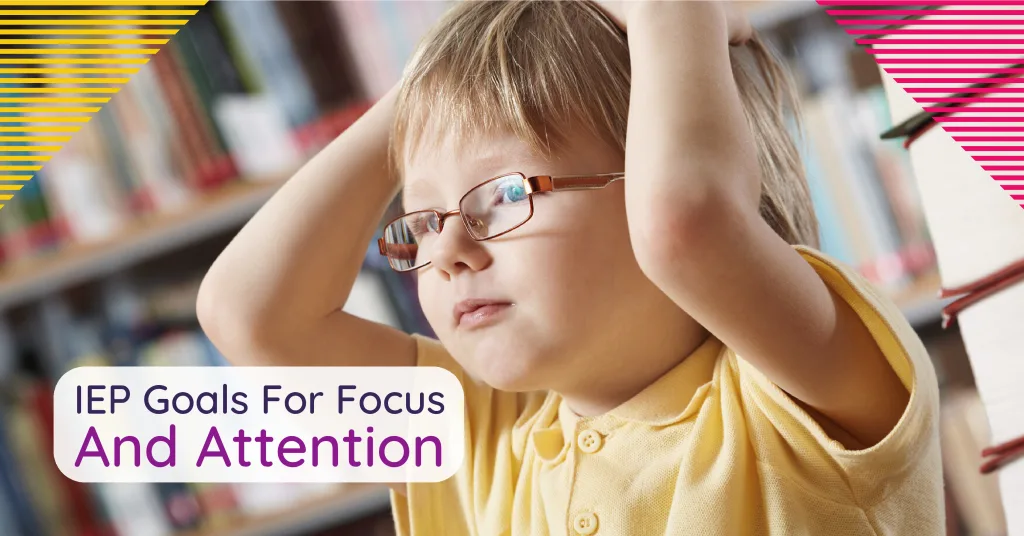Sample IEP Goals: Improving Focus and Attention in Students
Introduction:
Students with difficulties focusing and maintaining attention often require Individualized Education Programs (IEPs) to support their academic success. Crafting effective IEP goals is crucial for providing targeted interventions and measuring progress. This article provides sample IEP goals focused on improving focus and attention, offering practical examples for educators and parents. We'll explore different strategies and approaches, ensuring the goals are measurable, achievable, relevant, and time-bound (SMART).
Understanding the Challenges of Focus and Attention:
Before diving into sample IEP goals, it's essential to understand the underlying challenges students might face. These can range from:
- ADHD (Attention-Deficit/Hyperactivity Disorder): A neurodevelopmental disorder impacting attention, impulsivity, and hyperactivity.
- Learning Disabilities: Conditions affecting specific cognitive processes, impacting focus and information processing.
- Anxiety and Stress: High levels of anxiety can significantly impair a student's ability to concentrate.
- Sensory Processing Difficulties: Over- or under-sensitivity to sensory input can be distracting and disruptive.
Effective IEP goals must address the specific needs of the student, considering the root cause of their difficulties.
Sample IEP Goals for Improving Focus and Attention:
Here are some sample IEP goals categorized by focus area. Remember to adapt these to the individual student's needs and abilities:
1. In-Class Focus and Participation:
- Goal: [Student's Name] will increase on-task behavior during independent work periods from 20% to 80% as measured by teacher observation using a data sheet for 4 out of 5 consecutive weeks.
- Strategies: Use visual timers, frequent check-ins, proximity seating, and incorporate movement breaks.
- Measurement: Teacher observation and data sheet recording on-task behavior.
2. Sustaining Attention During Instruction:
- Goal: [Student's Name] will maintain attention during direct instruction for 15 minutes at a time, without requiring redirection, on 4 out of 5 days per week, for a period of 8 weeks.
- Strategies: Utilize interactive teaching methods, frequent questioning, and visual aids. Break down tasks into smaller, more manageable chunks.
- Measurement: Teacher observation and anecdotal notes.
3. Improving Organizational Skills:
- Goal: [Student's Name] will complete assignments and turn them in on time for at least 80% of assignments over the next marking period, using a planner and daily checklist provided by the teacher.
- Strategies: Provide a visual organizer, utilize a planner or calendar, break down assignments into smaller steps, and provide regular reminders.
- Measurement: Tracking of assignment completion and submission dates.
4. Reducing Distractibility:
- Goal: [Student's Name] will demonstrate an ability to stay focused on assigned tasks despite distractions, evidenced by completing at least 75% of independent work assignments without requiring more than 2 verbal prompts to refocus, over a four-week period.
- Strategies: Designated quiet workspace, noise-canceling headphones (if appropriate), and strategies to manage sensory input.
- Measurement: Teacher observation and a count of verbal prompts necessary to redirect focus.
5. Self-Regulation Skills:
- Goal: [Student's Name] will identify and verbalize at least three strategies to help manage feelings of frustration or restlessness during class activities by the end of the semester, as documented through teacher-student conferences and self-reflection journal entries.
- Strategies: Teach self-regulation strategies such as deep breathing exercises, mindfulness techniques, and positive self-talk.
- Measurement: Teacher-student conferences and review of journal entries.
Collaboration is Key:
Effective IEP goals require collaboration between parents, educators, therapists (if involved), and the student. Open communication ensures goals are realistic, attainable, and tailored to the individual's specific needs. Regular monitoring and adjustments are crucial to ensure the IEP remains effective.
Conclusion:
These sample IEP goals provide a framework for addressing focus and attention difficulties in students. Remember to personalize these goals, develop appropriate strategies, and consistently monitor progress for optimal outcomes. Consult with your child’s IEP team to develop goals that are specific, measurable, achievable, relevant, and time-bound. This collaborative approach ensures the best possible educational support for the student.

